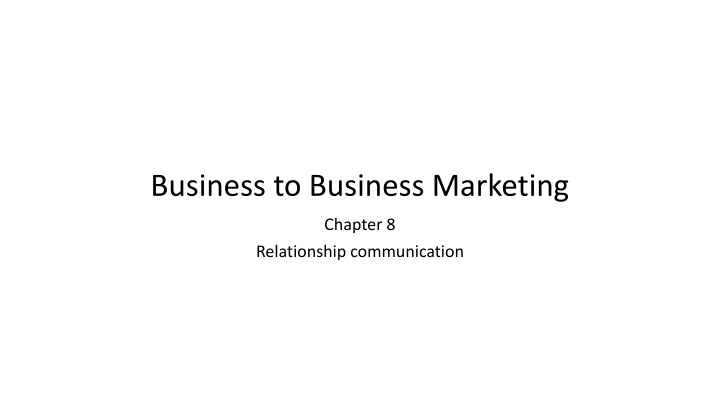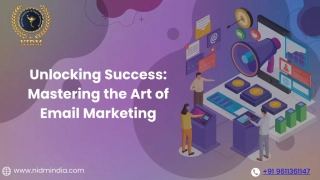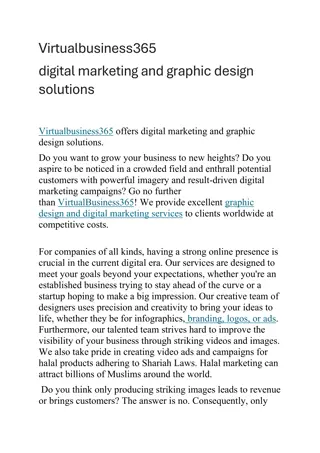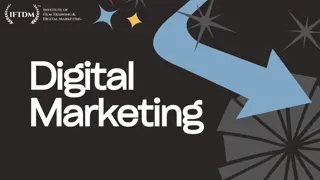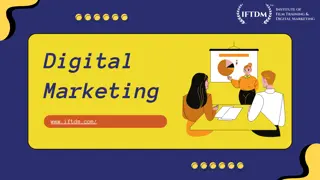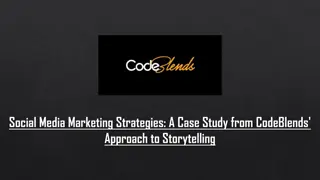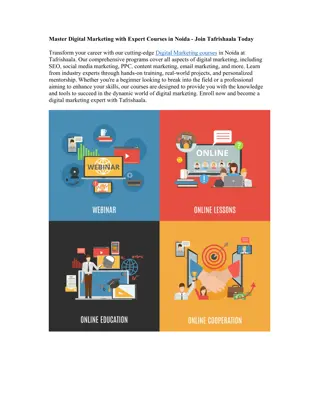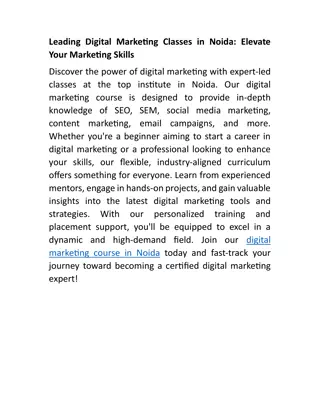Business to Business Marketing
Explore the importance of direct marketing, social media, personal selling, automation, and value-based selling in business-to-business marketing. Understand the key features and benefits of each strategy to enhance customer relationships, increase sales, and drive profitability.
Download Presentation

Please find below an Image/Link to download the presentation.
The content on the website is provided AS IS for your information and personal use only. It may not be sold, licensed, or shared on other websites without obtaining consent from the author.If you encounter any issues during the download, it is possible that the publisher has removed the file from their server.
You are allowed to download the files provided on this website for personal or commercial use, subject to the condition that they are used lawfully. All files are the property of their respective owners.
The content on the website is provided AS IS for your information and personal use only. It may not be sold, licensed, or shared on other websites without obtaining consent from the author.
E N D
Presentation Transcript
Business to Business Marketing Chapter 8 Relationship communication
Direct marketing What is it? involves interaction between individual customers and the vendor for partner acquisition, retention and development Key Features absence of face-to-face contact use of on-and offline media for direct, one-to-one communication and transactions facility to monitor and measure communication and transaction behaviour
Social media and social networking Social media can contribute to building positive associations with business brand or supplier via combined use of information sharing sites and social networking sites. Key to their effective use are: integration, consistency, control, conversation
Personal selling involves face-to-face contact with customer Nature and purpose permits direct interaction between buyer and seller allows identification of specific customer needs and tailoring to suit those needs Activities types of selling sales responsibilities selling process salesforce management
Figure 8.1 New customer and order acquisition lead generation prospecting call preparation selling order fulfilment
Connecting content, automation and sales content delivery content creation suspects identified via contact info., login, cookies or IP address contacts identified contacts that meet criteria (prospects) but not made sales inquiry market communication prospects leads ready to be contacted based on scoring or direct sales inquiry leads contacted sales lead negotiation relationship communication opportunities purchase secured; product & service delivery deals (Jarvinen & Taiminen 2016)
Value selling and possible consequences Value-based selling behaviour Consequences Seller outcomes sales better conversion ratio higher sales profitability Understanding customer s business model Relationship outcomes customer satisfaction loyalty, deeper relationships share of purchasing budget reduced price sensitivity Crafting value proposition Communicating value Customer outcomes attainment of business goals market & financial performance Terho et al. 2012
Culture and relationship communication Table 8.1 Hofstede s six dimensions of national cultures Individualism Collectivism Importance given to group wellbeing; value and actions of individual directed towards collective good High power distance Emphasis on individual as resource, control and motivation Lower power distance Strong democratic principles; power equally distributed; superiors and subordinates are equals Femininity Hierarchical; power is centralized at the top Masculinity Caring for others; emphasis on nurturing and quality of life Low uncertainty avoidance Assertiveness and personal achievement are important High uncertainty avoidance Willingness to take risks; individual risk-taking necessary to drive change Tradition and short-term orientation Emphasis placed on stability, rules and procedures to reduce uncertainty and avoid risk Future and long-term orientation Preference for maintaining traditions and norms while viewing societal change with suspicion Restraint Some links with past are maintained, but this while accepting that the world is constantly changing and the future needs to be prepared for Indulgence Strict social norms and duty shape behavior Freedom to satisfy human desires and to have fun. ( Hofstede et al, 2010.)
Culture and relationship communication mainly verbal but also non-verbal: gestures, attitudes, etc. feedback mechanism to verify repetition, paraphrases, interruptions context dependent who, where, when age, sex, dress, social standing, etc. workplace, showroom, home, friends
Culture and relationship communication work out how to express disagreement recognise what emotional expressiveness signifies learn how other culture builds trust avoid closed (yes/no) questions be selective of what is expressed in writing
Organising relationship communication External transactional field sales force: customer calling in defined territory discrete exchanges presentations, seeking orders, after-sales calls systems sales force: sales persons from various product groups combined efforts for systems selling major account sales force: cross-functional staff assigned to account; customer location less time on sales & marketing focus on joint activities e.g. market research, product development, R&D
Organising relationship communication Internal telemarketing group: makes proactive & outgoing calls to customers to solicit orders order centre: takes incoming customer calls & processes orders customer service group: technical problem-solving assistance by phone, internet
Controlling relationship communication Incentive pay system rewards employees for achieving specific performance targets. for sales person might include revenue, market/customer share, new product sales, profitability targets. Monitoring based pay system rewards employees for on effective performance of sales activities e.g. technical knowledge, adaptive selling, teamwork,sales presentations, planning and support
